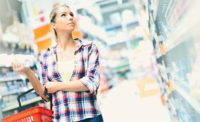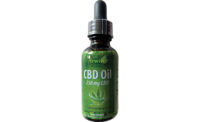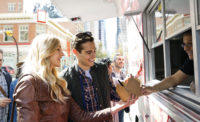Brand Packaging: Connected Packaging
3 Forces Driving the CPG Digital Transformation
The store shelf was once the mainstay of the consumer packaged goods (CPG) industry, a crucial brick-and-mortar spotlight for tangible products. Today, the consumer experience increasingly skews digital; COVID-19 alone accelerated e-commerce by 10 years in 10 months. This new market landscape demands a major pivot to ensure success: a digital transformation.

Here is a look at some of the twists and turns the CPG industry is taking in its digital transformation journey in order to redefine the consumer experience:
1. Convenience and Personalization
Convenience is paramount for busy consumers. Although attitudes for shopping in-person and online are similar, a recent Connected Packaging Consumer Survey revealed that 85% of survey participants purchase household staples online. Survey results indicate that many people do not miss the trip to the grocery store. It found that millennials, men in general, smart speaker owners and city dwellers enjoy online shopping for household staples more than in-person visits.
When fast-moving consumer goods (toilet paper, coffee, dog food, etc.) are in short supply, the household knows it — as the pandemic has thrown into sharp relief. Sensing scarcity even before we do, connected packaging looks to whittle down the household “to do” list through auto-replenishment.
Auto-replenishment works by the accelerating uptake of the Internet of Things (IoT) systems. Inexpensive devices can now be outfitted with sensors and wireless internet connectivity, allowing ordinary containers and dispensers to automatically order their own refills. Today, more than 10 billion devices connect to the cloud. Within the next decade, estimates raise that number astronomically high.
Consumers seem eager to invite this digital technology into daily life. Eighty-four percent of survey respondents believe that at least one product category was a good fit for auto-replenishment services in their own lives. Estimates show that by 2024, 14.5 billion packages in the consumer goods market will feature electronic functionality.
Auto-replenishment is a more precise way of keeping supply constant than the subscription service model, in which consumers opt for delivery of a product at a certain time-based interval (every three months, for example). Think Amazon “subscribe and save,” which often offers a discount if the consumer makes a commitment to subscribe. This fulfillment strategy is being embraced with 46% of survey respondents using a subscription to keep household staples arriving at a steady rate.
However, subscriptions don’t account for how people actually use consumable products, resulting in a “feast or famine” dynamic when goods arrive too quickly and accumulate in storage (a nuisance for bulky goods like toilet paper) or too late after a household has already run out (a straight-up crisis when it comes to coffee). The reality is that subscriptions require active management with consumers supplementing, delaying or canceling as needed. Auto-replenishment, by contrast, senses user needs through real-time analytics and refills only as appropriate — with no intervention needed.
In addition to subscription and auto-replenishment, quick fulfillment capabilities such as “one-click ordering” mean that CPG items can be restocked at the touch of a button, and increasingly, they are.
2. The Customer Experience: Sustainability
The world produces about 380 million tons of plastic annually, and 50% of that goes toward single-use plastics, according to Plastic Oceans. Auto-replenishment, home inventory management, and easy-to-use device and consumable systems can help decrease that percentage. Companies can produce a durable container built to last years, while substantially reducing plastic in consumable refill packaging for a better overall sustainability profile.
Connected packaging can lead to greater convenience and consumer stewardship in the CPG space. Purchase a durable bottle of all-purpose cleaner or detergent, and that container could feature smart technology to indicate when a refill is required. A paper-based or post-consumer resin (PCR) packaged concentrate subsequently delivered to the doorstep represents ultimate convenience in an environmentally friendly package. Without the need for romance packaging to draw consumers’ gaze on the shelf, CPG companies can create more efficient e-commerce packaging, and even compact concentrates for refills, reducing overall carbon footprint by declining to ship air and water.
In addition, when households receive sustainably packaged product only when it is needed, overall product and packaging waste can be reduced. Sustainability becomes an automatic daily practice. And CPG companies see fulfillment in a whole new light.
3. Market Differentiation and Ecosystem Lock-in
Global CPG brands have faced decades of eroding market share and declining profitability. Why is this? Reduced barriers to entry for manufacturing, and availability of stock packaging, have made it easier for agile upstarts to launch competing products quickly. At the same time, e-commerce gives us an infinite store shelf on the internet — brick-and-mortar retailers can gatekeep their in-store displays, but anyone can set up an online shopping cart. And most importantly, these quick-moving digital natives can effectively target market niches and forge a dynamic — even intimate — relationship with their consumers by addressing needs and desires that may have been ignored by the big brands.
CPG firms will not reverse these trends, but they can learn to seize the same opportunities that their small, quick-moving competitors have to differentiate their brands and cultivate loyal customers.
Early indications show that connected packaging provides a truly unique value proposition for consumers. Brands that are early adopters of connected packaging technologies will leverage solutions such as auto-replenishment, direct-to-consumer communication and home inventory management to create consumer experiences that are superior to the traditional options.
By embracing digital transformation in market strategy and development, CPG leaders can ensure their company stays at the forefront of purchasing decisions and consumer demand. The basic need for CPG products remains the same; it is up to the companies presenting their option to the world to make sure their product becomes a favorite and continues as such. Those that transform accordingly as the digital world continues to evolve will win the ultimate prize: the sale.
To learn more, visit Jabil’s Connected Packaging site.
Looking for a reprint of this article?
From high-res PDFs to custom plaques, order your copy today!








